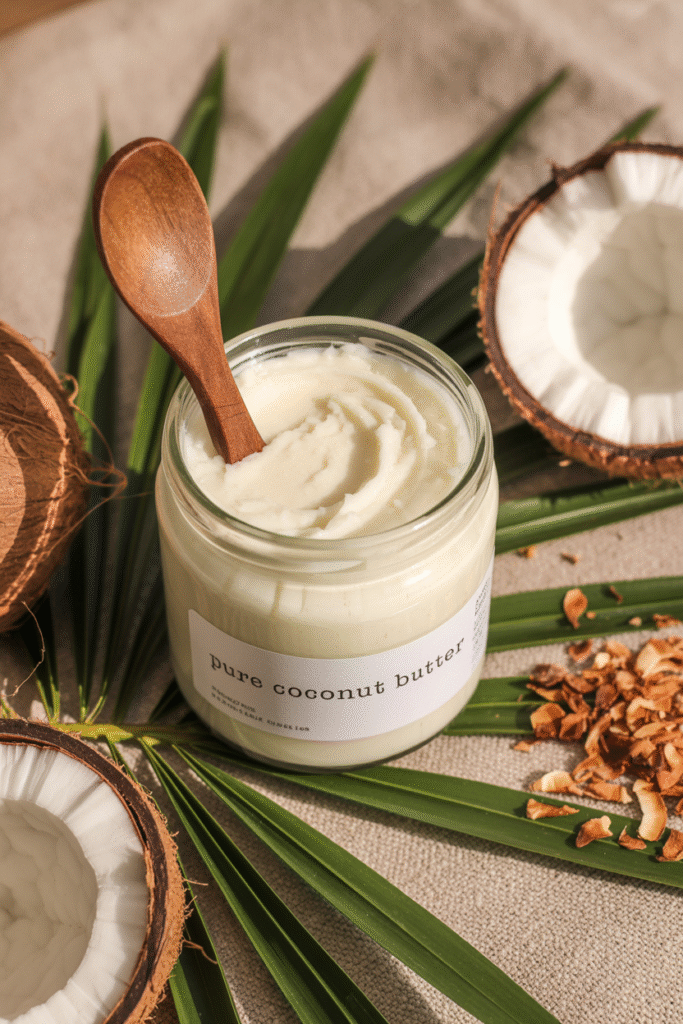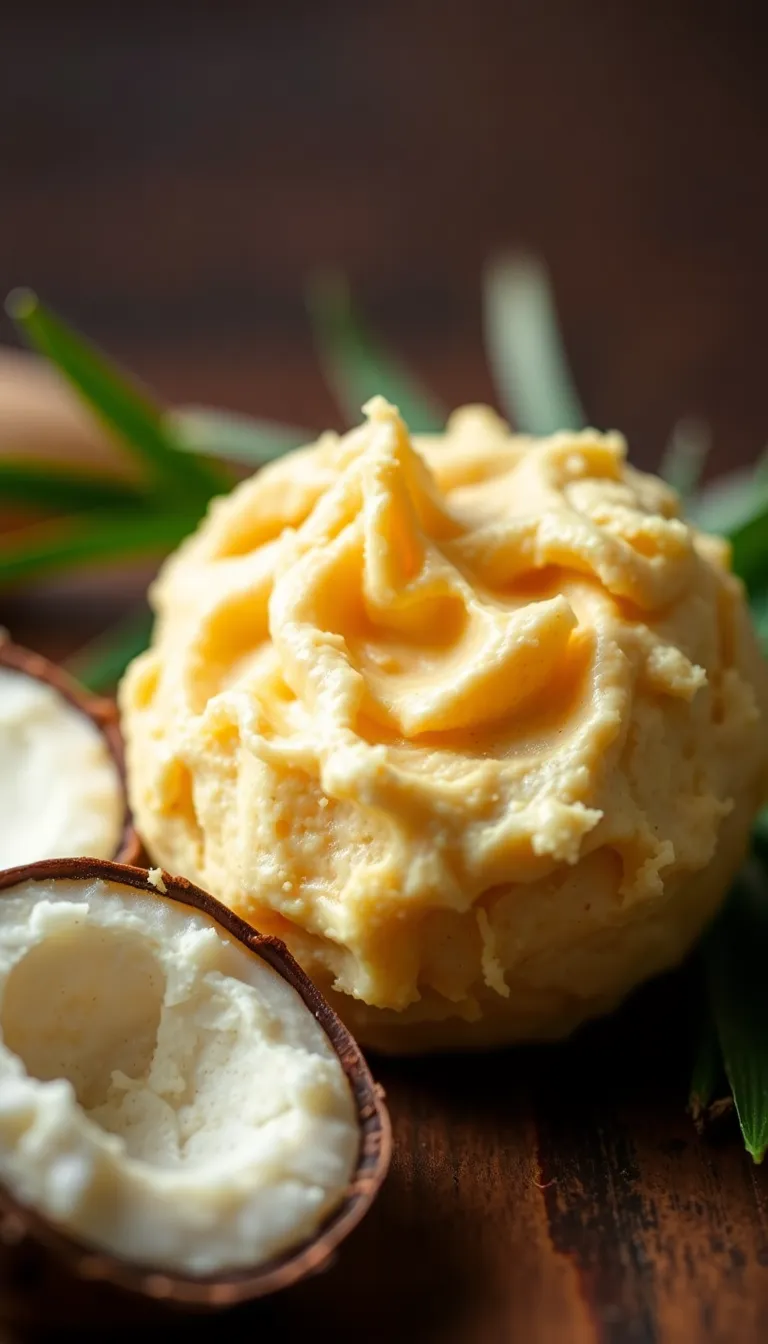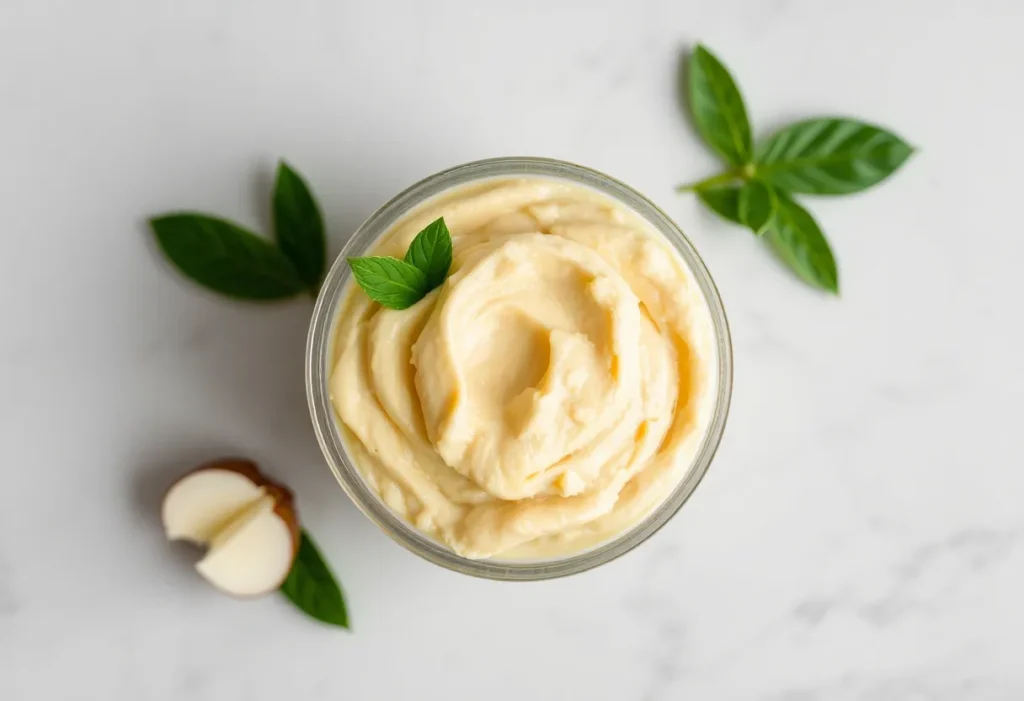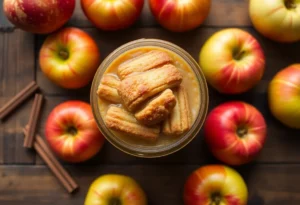Store-bought coconut butter costs a fortune, and half the time it’s sitting on a shelf collecting dust since who-knows-when. You deserve better. Homemade coconut butter takes one ingredient, zero skill, and about 10 minutes of your life.
The result? Creamy, dreamy, spreadable perfection that puts the overpriced jars to shame. Plus, you get bragging rights.
Who doesn’t want to casually drop “Oh, I make my own coconut butter” at brunch? Let’s get to it.
Table of Contents
What Makes This Recipe a Game-Changer

First, it’s stupidly easy. No fancy equipment, no obscure ingredients—just shredded coconut and a blender.
Second, it’s cheaper than buying it pre-made (we’re talking pennies per serving). Third, you control the texture. Like it super smooth?
Blend longer. Prefer a little crunch? Stop early.
No corporate overlords dictating your coconut experience here.
Ingredients: The Shortest Shopping List Ever
- 4 cups unsweetened shredded coconut (the finer, the better)
That’s it. Seriously. If someone tries to sell you a recipe with added oil or sugar, walk away.
You’re being scammed.
Step-by-Step Instructions (No PhD Required)
- Toast the coconut (optional but elite). Spread shredded coconut on a baking sheet and bake at 325°F for 5–8 minutes until golden. This deepens the flavor—like giving your butter a personality upgrade.
- Blitz it. Dump the coconut into a high-speed blender or food processor. Secure the lid like your life depends on it.
- Blend until magic happens. Start on low, then ramp up to high.
Scrape down the sides every 2–3 minutes. First, it’ll look like sand, then clumps, then a glorious, drippy paste. Total time: 10–15 minutes.
- Pour and flex. Transfer to a jar while warm (it thickens as it cools).
Admire your handiwork. Maybe take a photo for the ’gram.
Storage: Keep It Fresh, Keep It Smooth
Store in an airtight jar at room temperature for up to 2 weeks or in the fridge for 2 months. If it hardens, no panic—just warm the jar in hot water or microwave in 10-second bursts.
Stir before using.
Why This Recipe Wins at Life

Coconut butter packs healthy fats, fiber, and a subtle sweetness that makes oatmeal, toast, or even a spoon feel fancy. It’s vegan, keto-friendly, and doesn’t involve weird chemicals. Plus, you’re basically a kitchen wizard now.
Wave that blender like a wand.
Common Mistakes (Don’t Be That Person)
- Using sweetened coconut. Unless you want dessert butter, stick to unsweetened.
- Quitting too early. That gritty phase? Temporary. Keep blending.
- Over-toasting. Burnt coconut butter tastes like regret.
Watch it like a hawk.
Alternatives for the Adventurous
Feeling extra? Try these twists:
- Add cinnamon or vanilla for a flavor boost.
- Mix in cacao powder for chocolate coconut butter (dangerously good).
- Use coconut flakes instead of shredded for a chunkier vibe.
FAQs: Because You Asked (Or Might)
What is the difference between coconut oil and coconut butter?
Coconut oil is the pure fat extracted from coconuts, while coconut butter includes the whole coconut meat, making it thicker and more nutritious.
How do you store coconut butter?
Store it in a sealed jar at room temperature. It will solidify but can be softened by placing the jar in warm water or microwaving for a few seconds.
What can I use this butter for?
it can be used as a spread on toast, blended into smoothies, drizzled over oatmeal, or added to baked goods for flavor and moisture.
Final Thoughts
Homemade coconut butter is the lazy person’s gourmet hack. It’s cheaper, tastier, and makes you look like you’ve got your life together (even if you don’t).
Whip up a batch, and never overpay for the jarred stuff again. Your toast—and your wallet—will thank you.



